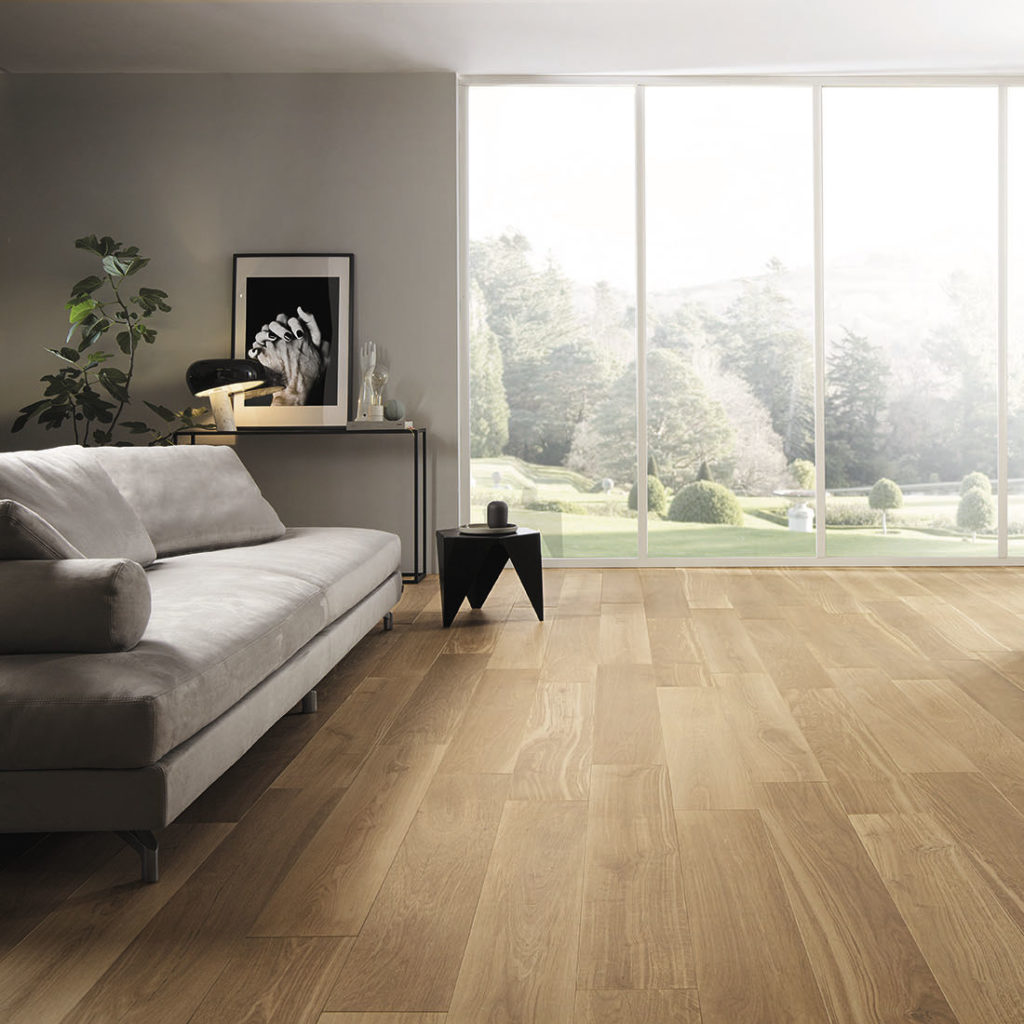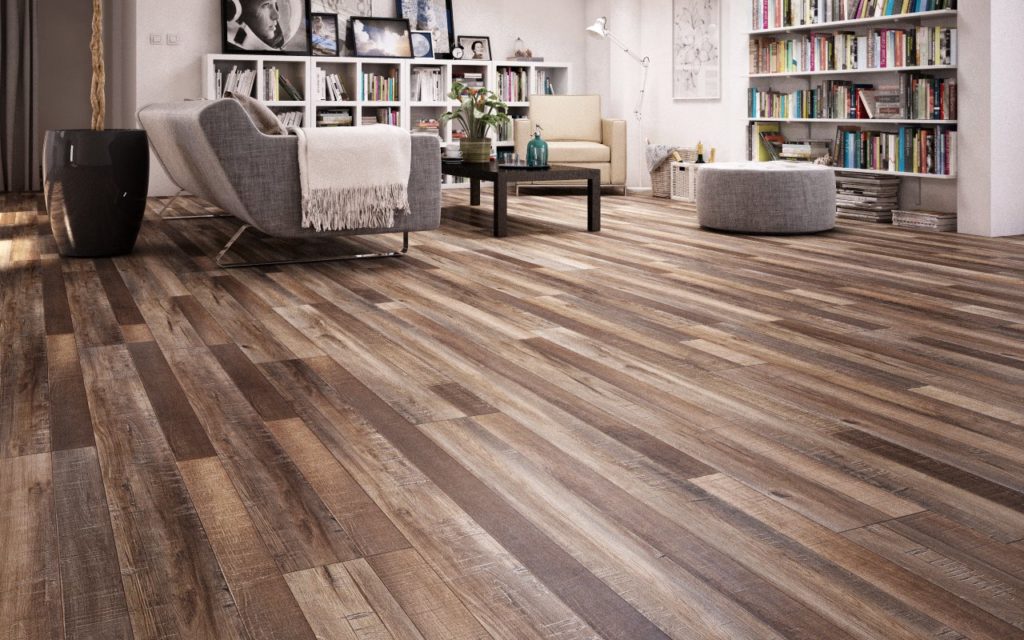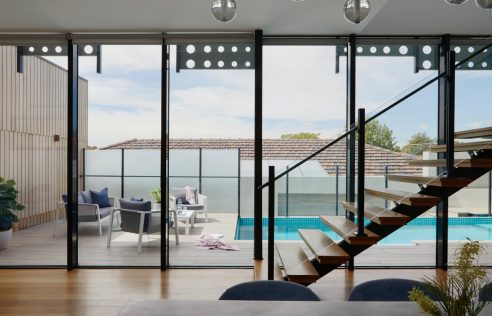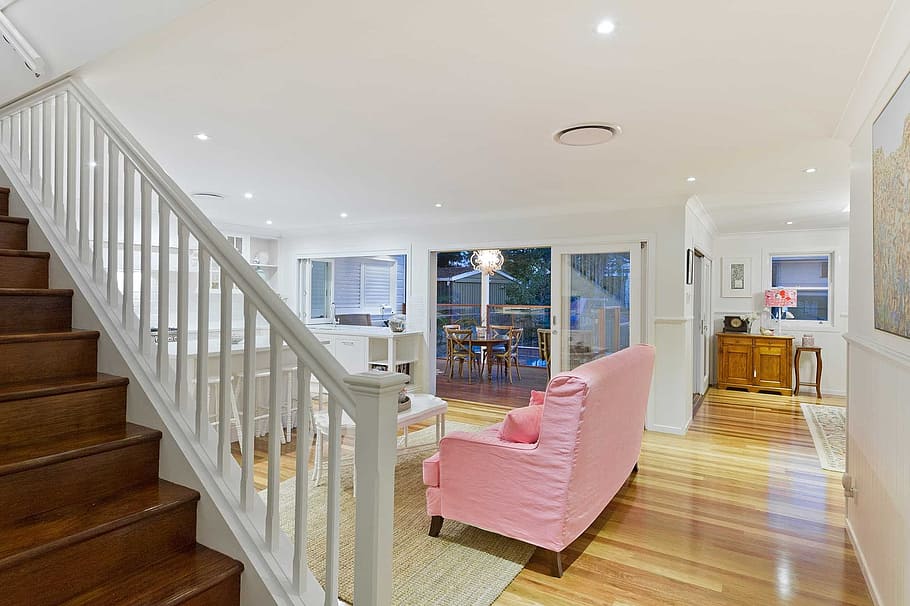There’re no home decorating challenges quite so frustrating as old, worn-out floors. You can paint the walls, add accessories, and even replace furniture on a budget, but replacing an entire floor is a much bigger – and costlier – job. That doesn’t mean you just have to live with your ratty old carpeting or scuffed-up vinyl. These days, there are lots of different flooring options, including several that are very affordable.
However, you can’t just pick up one of these cheap flooring choices at random and expect it to work in any space where you plunk it down. This article focuses mainly on tile and laminate, with pros and cons of each flooring type.

Ceramic Tile
Ceramic tile is made from a mixture of clay and shale that’s fired in a kiln like pottery. It’s a hard material that comes in a huge variety of colors, shapes, and patterns. Not all ceramic tiles are tough enough for flooring, so it’s important to make sure the ones you buy are rated for use on floors.
There are four main types of ceramic tile:
- Glazed Ceramic: This type of tile has a glass-like coating that can give the tile virtually any color or texture. Glazed ceramic tile is practically maintenance-free.
- Porcelain: This tile is fired at very high temperatures, making it extra-hard and durable. It’s available either glazed or unglazed. Both types are stain-resistant and work well in outdoor rooms.
- Quarry Tile: This unglazed ceramic tile has a slightly rough texture, making it more slip-resistant than glazed tile. However, it’s not available in as wide a range of colors.
- Terracotta: This unglazed tile comes only in earth tones. It’s less durable than other tiles and needs regular sealing to prevent stains.
Advantages
Tile comes in many colors and shapes, so it can fit in with any style of home. Thanks to modern printing technology, it’s also possible to create ceramic tile with virtually any pattern. It can mimic the look of natural stone or even wood, though it won’t feel like wood underfoot. Tests have found porcelain tile to be the most durable type of flooring, resistant to scratches, dents, and moisture. It’s also very easy to clean. Glazed ceramic and porcelain tile require very little maintenance, though other types need more.
Disadvantages
Tile feels cold and hard underfoot, and it makes footsteps sound louder. Glazed ceramic tile can also be slippery unless it’s coated with a special anti-slip finish. Durability varies depending on the type of tile you choose. Terracotta tile requires regular sealing. Glazed tile is easy to clean and maintain, but the lines of grout between the tiles can stain if you don’t seal them regularly. And although tile is a durable material, it’s not that easy to fix if a single tile happens to crack.
Best Uses
Porcelain tile is the best choice for high-traffic areas, such as kitchens and mudrooms, as well as for wet rooms such as baths and laundry rooms. It’s also ideal for an enclosed porch or sunroom.

Laminate
Laminate flooring is constructed much like engineered wood, with a thin veneer over layers of plywood or compressed fiber. However, the top layer is not wood but a photograph under a clear plastic coating. That means laminate can look like wood, stone, tile, or just about any other material. Laminate comes in either planks or tiles. Most of them are floating floor systems, which you can install right over your old flooring with no glue or nails.
Advantages
Laminate can mimic the look of wood or stone for much less money. It’s also easy to clean and requires very little maintenance. It’s a hard material that resists scratching and scuffing better than real wood. Laminate is easy to install over an existing floor, saving you time and money on your flooring project. That being said, it takes patience and ingenuity to fit the planks around corners and through doors, so you’re better off getting help from experts like the ones at AtoZ Kitchen & Bath.
Disadvantages
Like tile, laminate can be slippery when wet. Also, if water stands on it for any length of time, it can get in between the layers of the material, causing the planks to warp. Unlike real wood, laminate can’t be refinished when it wears out, only replaced. That can make it a less cost-effective choice than wood or tile over the long term.
Best Uses
Laminate is a good material for high-traffic areas, such as kitchens, foyers, and playrooms. It’s also a reasonable choice for basements as long as they have no problems with leaks or standing water. It’s best to avoid this material in wet rooms, such as bathrooms and laundry rooms.
I hope you find the information in this article useful. Stay tuned for more updates and suggestions in future posts.


